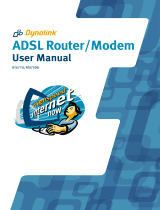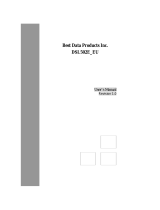
ADSL Bridge/Router User's Manual
iv
Logging in to CLI....................................................................................17
6
Getting Started with the Configuration Manager ............. 19
Accessing the Configuration Manager .................................................19
Commonly Used Buttons and Icons.....................................................19
Viewing Basic System Information.......................................................20
Committing Changes to Permanent Storage.......................................20
Rebooting the device using Configuration Manager ......................21
Quick Configuration ...............................................................................22
Quick Configuration Examples .............................................................24
RFC 1483 Bridge ..............................................................................24
RFC 2364 PPPoA.............................................................................24
RFC 1577 Router..............................................................................25
7
Basic Configuration...........................................................27
Bridge Mode...........................................................................................27
Part 1: Configuring the RTA100+ ADSL Modem/Router ...............27
Part 2: Check your connection status..............................................30
Part 2: Configuring the PC................................................................30
PPP Connection Mode..........................................................................31
Part 1: Configuring the RTA100+ ADSL Modem/Router ...............31
Part 2: Check your connection status..............................................33
Part 3: Configuring the PC................................................................34
Router Connection Mode ......................................................................35
Part 1: Configuring the RTA100+ ADSL Modem/Router ...............35
Part 2: Check your connection status..............................................37
Part 3: Configuring the PC................................................................38
8
Configuring IP Routes....................................................... 39
Viewing the IP Routing Table................................................................39
Adding IP Routes...................................................................................39
9
DHCP Configuration .........................................................41
RTA100+ ADSL Modem/Router DHCP Modes ..................................41
Configuring DHCP Server.....................................................................41
Part 1. Creating IP address pools....................................................41
Part 2. Enabling DHCP Server Mode..............................................43
Part 3. Configuring your PCs as DHCP clients...............................43

































